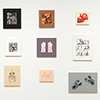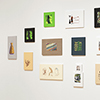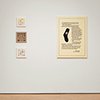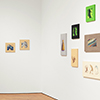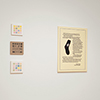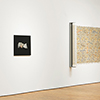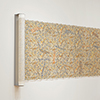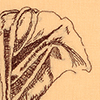MATERIAL GIRL Click on images to view project. |
 |
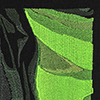 |
|||||||
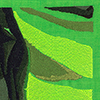 |
 |
 |
 |
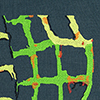 |
||||
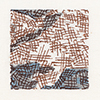 |
 |
 |
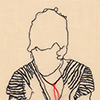 |
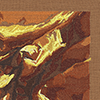 |
||||
 |
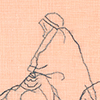 |
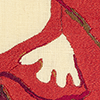 |
 |
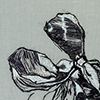 |
||||
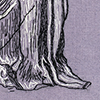 |
 |
 |
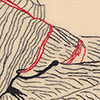 |
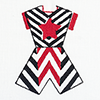 |
||||
 |
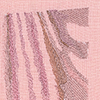 |
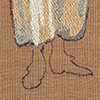 |
 |
 |
||||
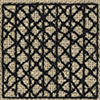 |
 |
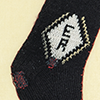 |
 |
 |
||||
 |
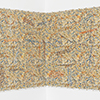 |
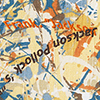 |
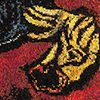 |
 |
||||
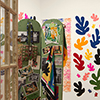 |
 |
 |
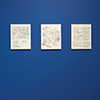 |
 |
||||
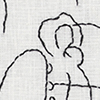 |
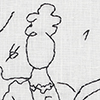 |
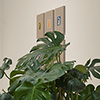 |
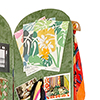 |
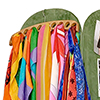 |
||||
 |
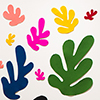 |
|||||||
MATERIAL GIRL 2022 [From the press release] Marinaro is pleased to announce MATERIAL GIRL, Elaine Reichek’s second solo exhibition with the gallery, occupying both gallery spaces. MATERIAL GIRL is a wide-ranging exploration of the relationship between textiles and painting, through nearly fifty works produced over the past four years. Though grounded in Reichek’s signature medium of embroidery, the exhibition also expands spatially to restage the studio itself as a site for artistic production, domestic life, and critical investigation. Upon entering the exhibition, 26 individual digital and hand embroideries are installed salon style, featuring an image of clothing or textile appropriated from a wide assortment of paintings and drawings. The sources for these works read like an associative mini-survey of artists who have variously depicted costume, drape, and pattern across centuries — Dürer, Michelangelo, Bronzino, Gentileschi, Watteau, Delacroix, Tissot, Rousseau, Vuillard, Picasso, Miro, Stepanova, Thiebaud, Marshall. Reichek’s manual and digital sewing techniques translate each painterly approach into thread and return each image to the materiality of fabric. Reichek complements this semiotic repertoire of fabric by interlacing her textiles with text. Turkey-Work (Susan Howe) highlights a particular sewing application whose meaning and associations have been displaced or misunderstood due to larger historical forces. Other works explore fabric’s role as a second skin — Mended Sock (Barbara Pym) conjures the erotics of needlework, while three additional embroideries depict the glove as an intimate bodily envelope. Two large works, JP Textile/Text 1 and 2, restage Jackson Pollock’s legacy as a collision of metaphors. Each work presents a length of a commercial printed fabric with a pseudo-Pollock pattern — Spatter, by Kravet Inc. — onto which Reichek has digitally sewn 25 citations selected from Pollock’s voluminous critical bibliography. Each citation has its own typeface and is randomly placed at least three times across the length of the fabric, which literally embroiders Pollock’s reputation over the pattern. Reichek uses both available colorways of Spatter and complements each with a distinct palette of 25+ thread colors. Both versions are presented as though unrolled from a wall-mounted dispenser, which suggests a language of provisional potential — “art by the yard,” a custom readymade on demand. Also featured in the exhibition is a mise-en-scène installation devoted to Matisse. As an artist who has always worked at home, Reichek has long been fascinated with the seamlessness of Matisse’s studio and domestic spaces. Reichek’s work has also consistently addressed the porousness between art and life, particularly in such domestically themed installations as The Artist’s Bedroom (1979, PS1), and A Postcolonial Kinderhood (1994, The Jewish Museum). The presentation here expands on Reichek’s 2014 installation of ephemera, Le Métier de Matisse, commissioned by the Museum of Modern Art’s education department for its interactive program “MoMA Studio: Beyond the Cut-Out.” Reichek’s restaging of the Matissean studio milieu is a mashup of Matisse’s source material with commercial product adapted from his work. Reichek evokes the eclecticism of Matisse’s extensive textile collection even as she deliberately blurs the boundaries between original and copy, inspirational and derivative. In the front area of Gallery Two, Un petit salon après Matisse juxtaposes the kinds of parlor furniture Matisse owned with a Cut-Outs-inspired carpet and a curtain of Serpentina fabric by Lino Gris. Joining the front and back areas is a double-sided green-velvet screen to which are attached an assortment of fabric swatches, Matissean merch, and printed images of his studios and sources. Folding screens are a stock motif in Matisse’s imagery, and here Reichek addresses the less attractive aspects of his practice — his primitivizing gaze and ambiguous relationships with female models and assistants. In the back area, Scattered “Sheaf” with Felt and Fabric deconstructs Matisse’s 1953 ceramic tile mural The Sheaf. In Reichek’sremade version, the leaf-shapes’ saturated hues are literally “dyed in the wool,” pinned around a tricolor, imitation-block-print floral pattern. By including her own Matisse-adapted hand embroideries and digitally sewn Swatches in this theatrical installation, Reichek brings the conceptual and material repartee full circle to her own artistic production. Here she is both subject and object, maker and viewer, fan and critic, engaged in a constant circular dialogue.
|
